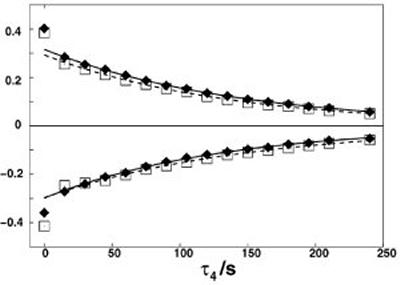Research project: Levitt: Long-lived Nuclear Singlet States
The quantum states that are studied in nuclear magnetic resonance experiments have a typical lifetime that is typically between a few milliseconds and a few seconds.
The quantum states that are studied in nuclear magnetic resonance experiments have a typical lifetime that is typically between a few milliseconds and a few seconds.
Our group recently discovered the existence of some special nuclear states called singlets that are unusually long-lived, up to 20 minutes in one recently-discovered case. The existence of such states suggests new forms of NMR experiments, including for example, the possibility of following how blood flows through the body on a time scale of minutes, rather than the seconds that can be achieved with current NMR imaging methods. This might allow the diagnosis of certain medical conditions that are difficult to detect at the moment. We are developing the theoretical and experimental tools for handling these long-lived nuclear singlet states with the aim of exploiting long-lived states in the context of chemical reactions and NMR imaging.

Decay curve for a nuclear singlet state. The time axis is in seconds, so the decay process takes minutes to complete in this case.
References:
M. Carravetta, O.G. Johannessen and M. H. Levitt, "Beyond the T1 limit: Singlet Nuclear Spin States in Low Magnetic Field", Phys. Rev. Letters 92(15), 153003 (2004).
M. Carravetta and M. H. Levitt, "Long-lived nuclear spin states in high-field solution NMR", J. Am. Chem. Soc. 126, 6228-6229 (2004).
M. Carravetta and M. H. Levitt, "Theory of Long-Lived Nuclear Spin States in Solution Nuclear Magnetic Resonance. Part 1. Singlet states in low magnetic field", J. Chem. Phys., 122, 214505 (2005).
G. Pileio, M. Concistrè, M. Carravetta and M. H. Levitt, "Long-lived nuclear spin states in the solution NMR of four-spin systems". J. Magn. Reson., 182, 353-357 (2006).
G. Pileio and M. H. Levitt, "J-stabilization of singlet states in the solution NMR of multiple-spin systems", J. Magn. Reson. 187, 141-145 (2007).